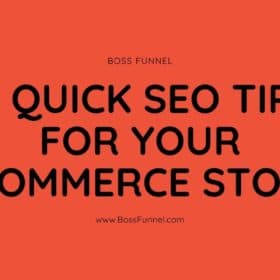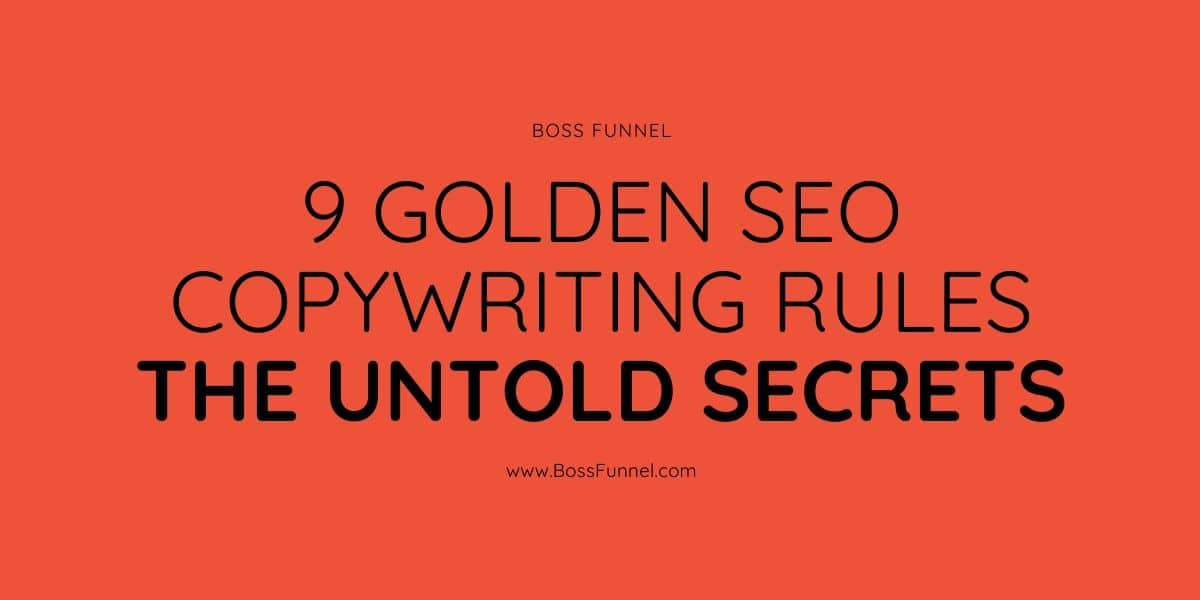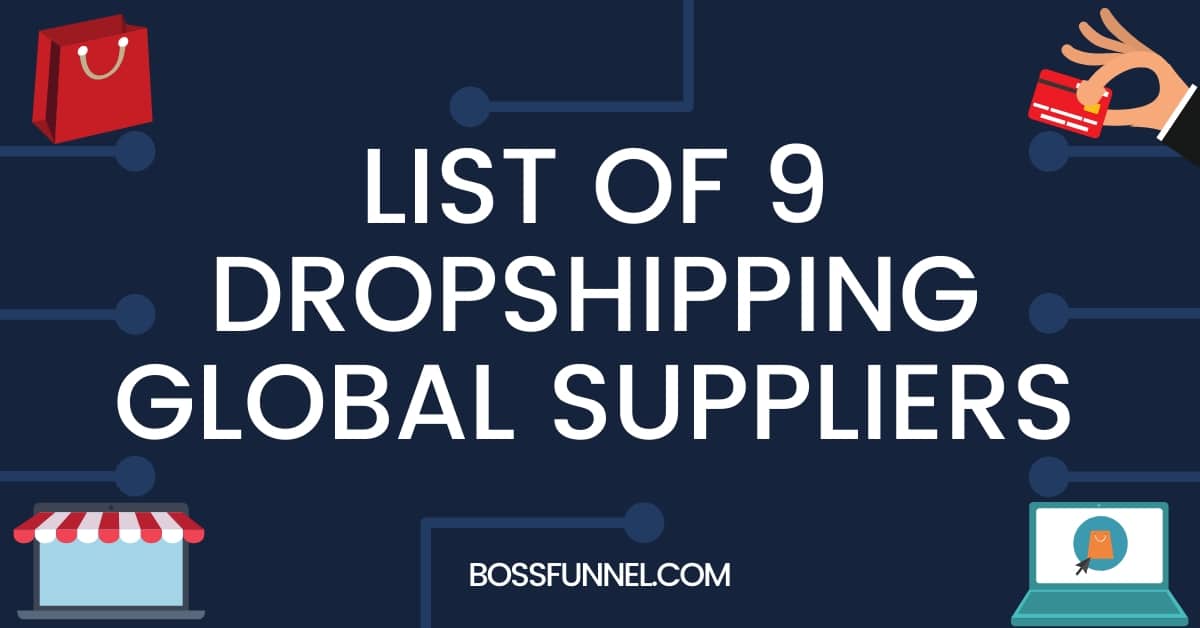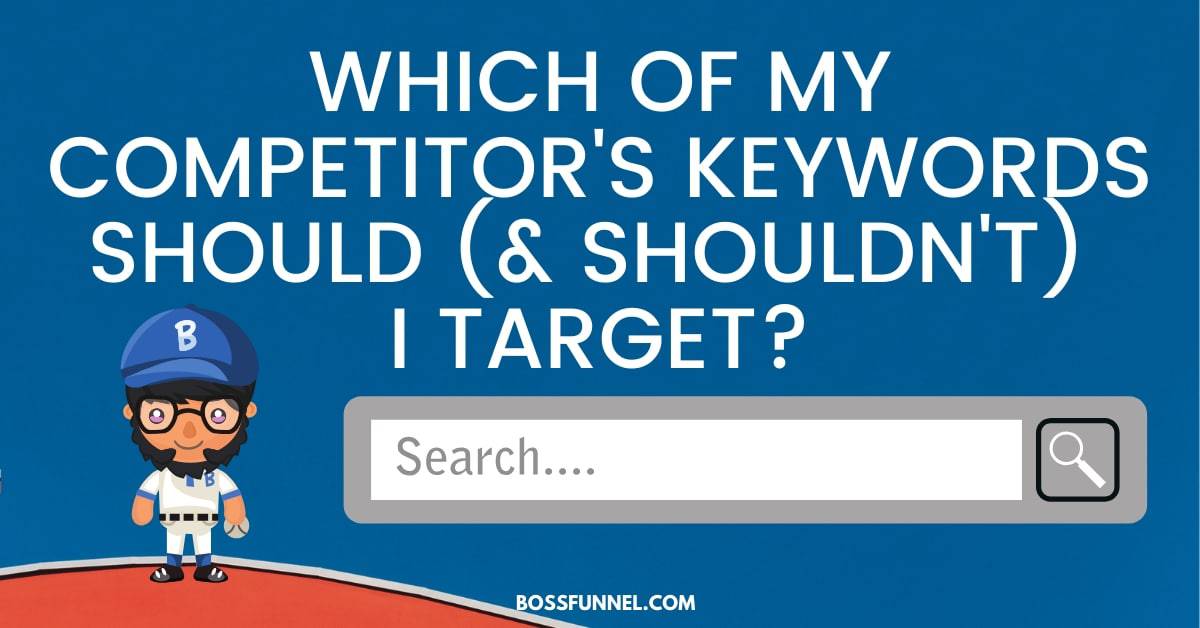So, you founded your online store, but you lack knowledge about On-page SEO Tips For eCommerce. We bring to your attention a collection of recommendations that will help increase the ranking of the site and thereby increase sales. The article will be interesting for owners of online stores, as well as those who plan to open their online store and promote it on the Internet.
Proper Keyword Analysis for e-Commerce Stores
Like any other SEO campaign, promotion for e-commerce should also start with keyword analysis. By skipping this important step, you will act blindly, which is unlikely to bring a positive result.
To analyze the keywords of an e-commerce site, you must:
– make a list of all pages on your site;
– choose the right keywords for each page.
Keyword analysis needs to be done on a page-by-page basis. It should be kept in mind that e-commerce sites can have two different types of pages. These are category pages and product (description) pages. The same approach is not advisable for both.
Keyword Analysis Steps:
1. Get a complete list of pages on your site
To do this, you can use the resource yourdomain.com/sitemap.xml
The result of your actions should look like this:
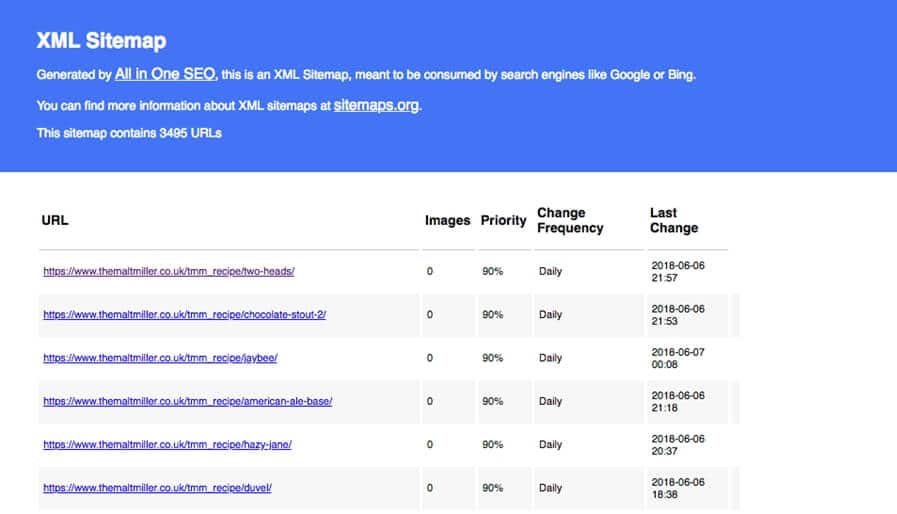
In order to clear the list of URLs, we recommend using the Scraper plugin (Chrome ).
Here is the XPath to use:
//a►contains(text(),"{yourdomain.comasket")†/@href
Those who are just planning to launch their site can take similar actions, but not for a competitor’s site. Next, you can use its structure to build your own site.
To find a suitable site for this purpose, indicate the desired region, then enter the set of keywords (10-15) associated with the material that you will sell.
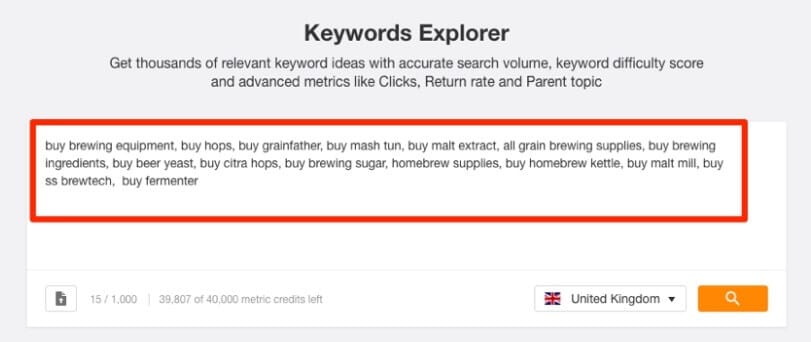
Tip:
In the menu on the left, go to the “Traffic”> “By Domain” section.
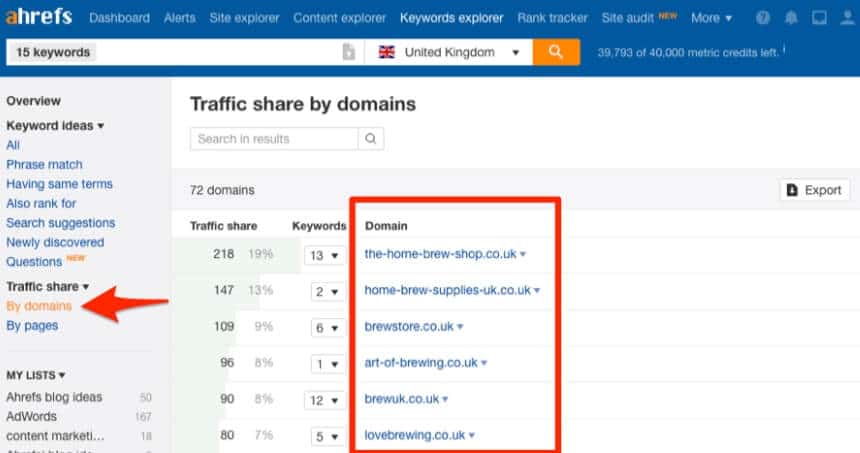
How to act:
– Here you can see which domains receive the most traffic when taking into account the criteria you entered.
– Choose one. Be careful with well-known and popular brands.
– Clear the site map, as we described above.
– Paste the results into Google Sheet.
2. Select the main pages
As we already said, it is necessary to analyze the keywords page by page. Of course, this advice can cause a storm of indignation, because there can be many pages. Indeed, the process can last forever. To avoid this and to save time, we suggest using the following technique called “Optimization of the most important pages”.
This requires using Google Analytics with the setting of e-commerce tracking. So you can get an idea of the most important pages:
Behavior> Site Content> Landing Pages> Sort by Revenue (High to Low)

If you don’t have Google Analytics installed, we recommend that you use the Site Kit plugin by Google.
3. Find and match keywords with each page
Having received a list of priority pages for optimizing pages, you can begin to search and compare keywords with each of them.
Step 1. Search for a keyword.
You can use Ahrefs Site Explorer to search for keywords.
Site Browser > Enter Page URL> Organic Keywords

Important! Be sure to make URL search settings in Site Explorer.
Now open the SERP list. Here we can check the top 10 ranking pages for your request.
First of all, pay attention to the following:
– What types of pages are currently being ranked? What product pages?
– Which category pages?
– Blog Articles? Or something different?
Next, look at the top keyword.
Typically, the top keyword matches most pages in the top 10.
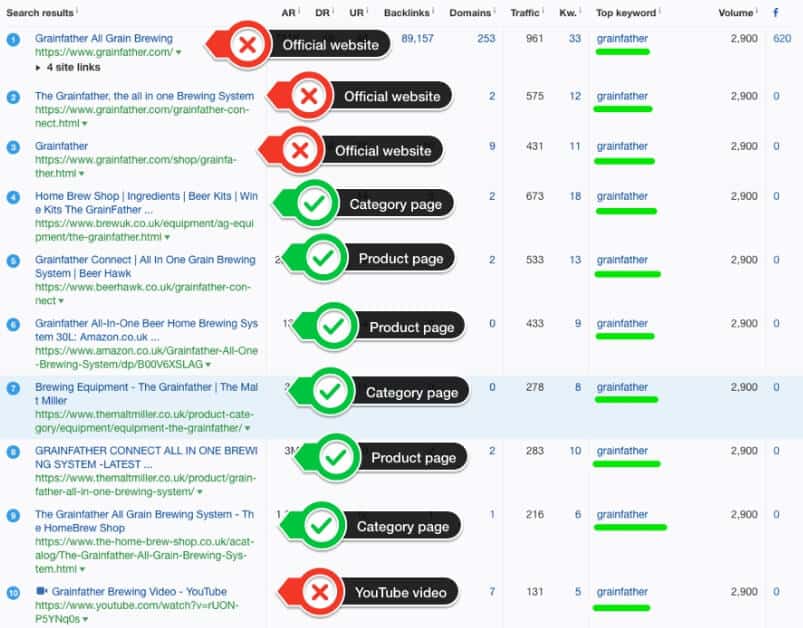
In order to improve your search result:
Sort the Organic Keywords report by the search volume.
– Check the search results, see if the pages of products and categories are ranked (if not, find another keyword).
– Take as much as possible similar to your page in SERP which already has excellent traffic.
– View the organic keywords report for this page.
– Repeat the initial steps.
Step 2. How to search for Long ‐ Tail queries and related keywords
You can use several methods to search for Long ‐ Tail queries.
You can use the organic keywords report.

The main thing at the same time – do not forget to study SERP for each of them.

Result:

On-page SEO Tips For eCommerce
Once the keywords are noted, it’s time for optimization.
1. Optimization of Meta Titles, Descriptions and H1
Most e-commerce sites have tens and hundreds of thousands of pages, so creating unique descriptions and titles is a troublesome process and takes a lot of time. Therefore, we can observe the following picture, which demonstrates a template approach:

One huge drawback of this approach: it does not allow us to optimize each page.
Recommendation! Instead of a template approach, it is better to use a hybrid one.
Features of the hybrid approach:
– First of all, write a unique description of the most important pages.
– You should not use the same template for each page.
– Try to create your own unique template for each category, subcategory, brand description.
Example:
The online store sells 85 different types of whole hops, which are packaged in vacuum packs of 100 g each for the convenience of customers and to preserve freshness.

Here is a meta title and a ready-made description template for each product from this category:
Buy {HOP NAME} Hops (100 g) – vacuum-packed for freshness | Malt Miller
Buy {HOP NAME} at the Malt Miller Store – FREE Shipping. It is always fresh thanks to vacuum packaging. We offer free shipping for orders that were placed before 14:00.
As we noted earlier, it is extremely important to create unique descriptions for the most important pages. The question arises quite justifiably of which pages can be considered the most important?
Our answer: the important pages will be those that are in the TOP 10 for at least one keyword. Filter them in your table and get to work.
To create a description, you must use the keyword and Long ‐ Tail queries. Be sure to include in your text the words that prompt you to act or reflect the action, for example: buy at a discount, order, get a discount. Do not forget to add your USP to the description, and then optimize the text for CTR.
Now about H1.
You must write and use a unique category name (for category pages) or a product name (for product pages), with the keywords used.
It is also important to make sure that for each page of your site there is only one H1. This is one important On-page SEO Tips For eCommerce
2. How to optimize the URL
Unfortunately, the following situation with e-commerce URLs often arises:
www.topshop.com/en/tsuk/category/clothing-427/t-shirts/N-82zZqz6Zdgl
Of course, this is not very good, and such situations should be avoided. URL weaknesses (permalinks) must be as readable as possible.
How to create them correctly:
yourdomain.com/ category – name (category page)
yourdomain.com/ category – name / subcategory – name (subcategory page)
yourdomain.com/ category – name / subcategory – name / subcategory – name (subcategory page)
yourdomain.com/ category – name / subcategory – name / subcategory – name / product ( product page)
Here are a few examples for the previously mentioned hop shop:
themaltmiller.com/ ingredients / (category page)
themaltmiller.com/ ingredients / hops / (subcategory page)
themaltmiller.com/ ingredients / hops / whole / (subcategory page)
themaltmiller.com/ ingredients / hops / whole / zither / (page product)
Example of incorrect construction:
themaltmiller.com/ ingredients / hops / 2018 best citrate hops /
Some more important guidelines for writing effective e-commerce URLs:
1. Make them simple and short.
2. Use your main keyword.
3. Use hyphens (-) to separate words.
4. Contraindicated: spaces, underscores, other characters.
5. The page context should be clear.
6. Try to avoid URL parameters.
Remember, this On-page SEO Tips For eCommerce is very important for store owners.
3. Create a unique description of products and categories
Let’s start with how it looks in practice.
Using a unique description:

Topshop T-Shirts & T-Shirts category page.
Product Page:
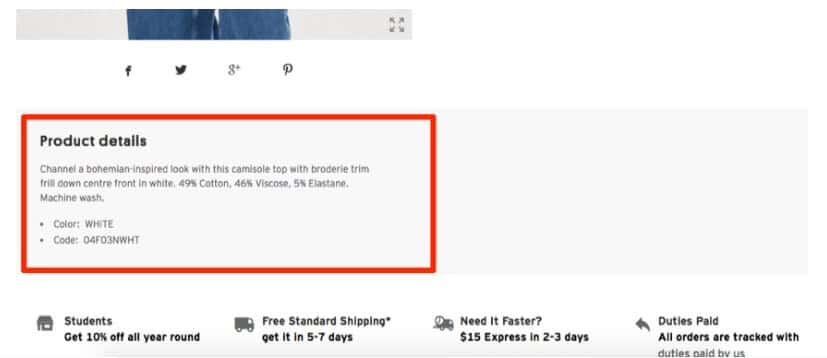
Reasons for using the unique description:
– The visitor receives more important information.
– Google will find out what this page is about. Pages are ranked according to an algorithm that requires written content on the page.
Attention! It is important to use unique descriptions for products and categories that are not copied from the manufacturer’s website or the competitor’s website. A unique description can be made independently or involved in the work of a professional copywriter.
Here are some tips: 10 WordPress Image Optimization Plugins: Best Free & Paid Included
Tips for creating the description yourself:
1. The description must contain the entire main keyword.
2. Also use Long ‐ Tail variations, synonyms, and LS words.
3. Keywords should be entered appropriately and not impair the readability of the text.
4. Only provide information that is relevant to users.
5. The description should consist of short sentences.
In the case when creating a description for each page is difficult, you can start with the most important ones.
Above we have listed the most important rules for SEO in e-commerce. By acting on them, you can increase traffic to your site.
You can also read: How to Promote your Website in 2020: What’s New in SEO?



